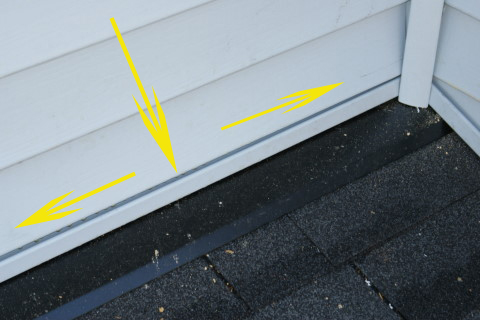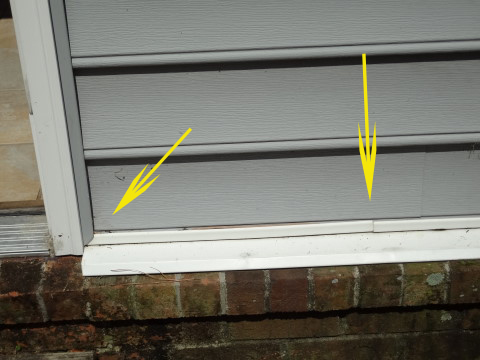- Home - Blue Palmetto Home Inspection of Summerville and Charleston
- Learn About Us and This Charleston Home Inspector
- What's Inspected
- Charleston Lowcountry Inspection Areas (geographic)
- Testimonials
- >>>Blogs (educational)
- Sample Reports & Documents
- Why Get a Home Inspection Report
- Charleston's Top Ten Reasons
- Home Inspector Photo Galleries
- Pricing
- Scheduling and Customer Information
- Home Inspection Authorization Contract
- General Scope of Work (electronic)
- Home Inspection Customer Satisfaction Survey
- Privacy Policy
- Full site
- The Roof Framers Field Manual
Vinyl J channel used at bottom holds water
Submitted by Ray Thornburg on Wed, 09/26/2012 - 08:30
When Vinyl J channel is used at the Bottom
Have you ever seen vinyl j channel used at the bottom of a wall and wondered what happens to the moisture trapped by the channel. Probably not..... that's what home inspectors are for... right. I see this problem more than I should even on new homes. Let's take a look at a pretty picture to start our discussion.
In this photo you can see how water flowing down the wall will be caught in the j channel where it will flow sideways until it finds an exit path. If the corner in this picture is not flashed correctly from underneath the J channel then moisture might penetrate the structure.
Actually the proper way to start horizontal vinyl is to use a metal starter strip. In this way no J is used. However; to use a starter strip you have to start with a whole piece. Sometimes this isn't possible because installers want to line the siding up to be even with other siding for aesthetic purposes or because the siding is being ran vertically.
Here is the inside view of the vinyl j channel. You can see how water can be funneled sideways in this picture.
In this photo you can see an actual home where moisture damage is occurring. Water was being diverted to the door where it was being absorbed by the building materials. Inside trim and sheetrock and door jambs were moisture damaged. Not knowing the real reason for the moisture damage might make someone spend more money on ineffective remedies like replacing the door or adding a storm door for example. I happen to know that in this case another inspector had failed to advise his client about this installation deficiency. In this case using J channel at the bottom was unnecessary because they started with a whole piece which means they could have used starter strip instead.
The Solution
When vinyl J channel is used at the bottom like this proper flashing is essential especially at the corners. Also; 1/4 inch weep holes should be drilled about 12 inches apart into the J channel only. This will help keep the track dry and prevent accumulation of unwanted moisture. Siding manufactures differ in their recommendations regarding the spacing of the holes and the size. Page 28 of the Vinyl Siding Institute's installation manual is one such manual. Another is page 24 of the KP building products manual.
Choose a Charleston home inspector with experience. We hope you choose Us.
Blue Palmetto Home Inspection serves the entire Charleston lowcountry area!
843-608-5851



